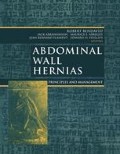Abstract
Tumor development in response to the subcutaneous implantation of plastics and other inert materials, known as foreign-body (FB) carcinogenesis, was first observed over 40 years ago. It is a classic model of multistage endogenous tumorigenesis that requires one-half or two-thirds of the rodent lifespan for sarcoma or tumor development. However, unlike chemical rodent carcinogenesis, FB carcinogenesis is generally dismissed as a phenomenon unique to the rodent. The early experimental studies demonstrated unequivocally that certain physical characteristics of the implant, such as size, shape, and surface morphology, but not chemical composition, were essential for FB carcinogenesis. Furthermore, a dose/response relationship was found between the implant size and tumor frequency. Materials that will induce FB tumors include films of Dacron®, nylon, polyethylene, polystyrene, polyvinyl chloride, saran, cellophane, polydimethylsiloxane, and Teflon®. It was concluded that tumor formation was directly related to cellular events during the FB reaction and formation of the fibrotic capsule surrounding the implant.
Access this chapter
Tax calculation will be finalised at checkout
Purchases are for personal use only
References
Brand KG, Buoen LC, Johnson KH et al. Etiological factors, stages, and the role of the foreign body in the foreign-body tumorigenesis: a review. Cancer Res. 1975;35:279–286.
Nakamura T, Shimizu Y, Takimoto Y et al. Biodegradation and tumorigenicity of implanted plates made from a copolymer of L-caprolactone and L-lactide in rat. J Biomed Mater Res. 1998;42:475–484.
Rubin JP, Yaremchuk MJ. Complications and toxicities of implantable biomaterials used in facial reconstructive and aesthetic surgery: a comprehensive review of the literature. Plast Reconstr Surg. 1997;100: 1336–1353.
Gillespie W, Frampton C, Henderson R et al. The incidence of cancer following total hip replacement. J Bone Joint Surg Br. 1988;70:539.
Deapen DM, Brody GS. Augmentation mammoplasty and breast cancer: a 5-year update of the Los Angeles study. Plast Reconstr Surg. 1992;89:660.
Berkel H, Birdsell DC, Jenkins H. Breast augmentation: a risk factor for breast cancer. Í Engl J Med. 1992;326:1649.
James SJ, Progribna M, Miller BJ et al. Characterization of cellular response to silicone implants in rats: implications for foreign-body carcinogens. Biomaterials. 1997;18:667–675.
Brand KG, Brand I. Risk assessment of carcinogenesis at implantation sites. Plast Reconstr Surg. 1980;66:591–595.
Jennings T, Peterson L, Axiotis Cet al. Angiosarcoma associated with foreign body material. A report of three cases. Cancer. 1988;62:2436–2444.
Brand KG, Buoen LC, Brand I. Multiphasic incidence of foreign body-induced sarcomas. Cancer Res. 1976;36:3681–3683.
Ott G. Fremdkörpersarkome, 1st ed. New York: Springer-Verlag, 1970.
Weiss WM, Riles TS, Gouge OC et al. Angiosarcoma at the site of a Dacron vascular prosthesis: a case report and literature review. J Vasc Surg. 1991;14:87–91.
Weinberg DS, Maini BS. Primary sarcoma of the aorta associated with a vascular prosthesis: a case report. Cancer. 1980;46:398–402.
O’Connell TX, Free HJ, Golding A. Sarcoma associated with Dacron prosthetic material: case report and review of the literature. J Thorac Cardiovasc Surg. 1976;72:94–96.
Author information
Authors and Affiliations
Editor information
Editors and Affiliations
Rights and permissions
Copyright information
© 2001 Springer Science+Business Media New York
About this chapter
Cite this chapter
Klosterhalfen, B., Klinge, U., Schumpelick, V. (2001). Carcinogenicity of Implantable Biomaterials. In: Bendavid, R., Abrahamson, J., Arregui, M.E., Flament, J.B., Phillips, E.H. (eds) Abdominal Wall Hernias. Springer, New York, NY. https://doi.org/10.1007/978-1-4419-8574-3_29
Download citation
DOI: https://doi.org/10.1007/978-1-4419-8574-3_29
Publisher Name: Springer, New York, NY
Print ISBN: 978-1-4612-6440-8
Online ISBN: 978-1-4419-8574-3
eBook Packages: Springer Book Archive

